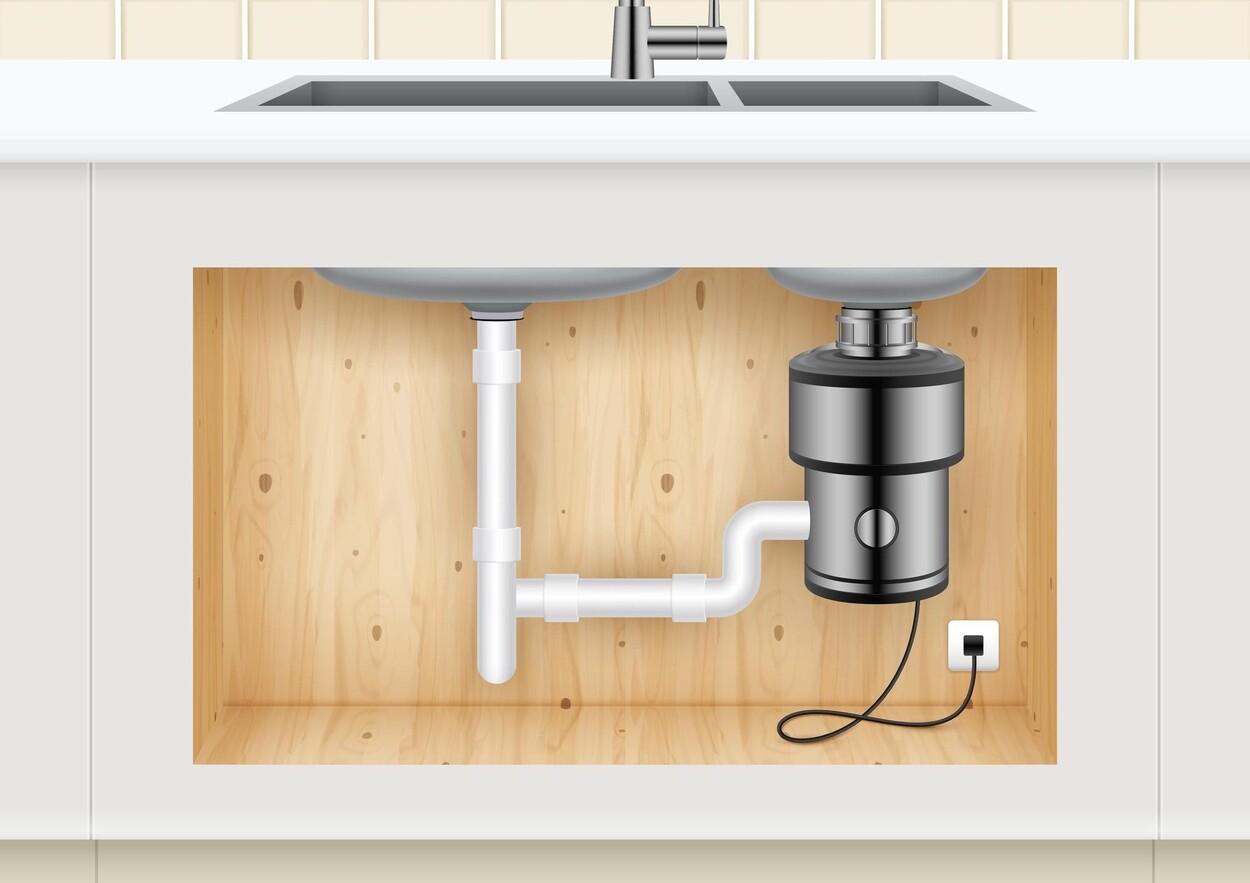For we Australians, a well-functioning kitchen is the heart of the home, and a key component to that is a properly maintained kitchen plumbing system.
Understanding this system and handling minor issues ourselves can prove invaluable, saving both time and money.
The following points will give you a brief insight into the important aspects of your kitchen’s plumbing:
- Water Supply and Drainage: Fundamental to any kitchen plumbing system, they ensure a seamless flow of clean water in and waste out.
- Kitchen Appliances’ Plumbing: Get familiar with the plumbing intricacies of appliances like dishwashers and fridges to catch issues early.
- Common Plumbing Problems: Know the typical problems like leaks or blockages to be prepared for when they strike.
- DIY Fixes: Learn how to handle minor glitches such as unclogging a drain or sealing minor leaks yourself.
- Professional Help Indications: Recognise the signs that indicate when it’s time to call in a pro from Ferguson’s Plumbing.
- Maintenance Tips: Regular checks and proactive measures can prevent major breakdowns, ensuring your plumbing system’s longevity.
Sufficient understanding and maintenance efforts go a long way in keeping your kitchen plumbing system operating smoothly.
The Key Lookouts for Your Kitchen Plumbing
Maintaining an optimal kitchen sink plumbing operation involves regularly checking for any blockages or leakages.
If you find yourself dealing with issues like insufficient or no hot water, it might point to larger problems that need immediate attention.
Additionally, don’t forget about your garbage disposal system, taking care to avoid clogs and ensuring it runs smoothly.
Remember, a well-maintained kitchen plumbing system can save you from unexpected troubles and costs in the long run.
Contents
- The Essential Aspects of a Kitchen Plumbing System
- Water Supply and Drainage System in Kitchen
- Understanding Your Kitchen Appliances’ Plumbing
- Common Kitchen Plumbing Problems Faced
- DIY Fixes for Minor Kitchen Plumbing Issues
- Indications That You Need a Professional Plumber
- Proactive Measures and Regular Maintenance Tips
- How Kitchen Sink Plumbing Operates
- Detailed Study of a Kitchen Sink Drain
- Understanding Garbage Disposal and Care
- Addressing Dishwasher and Fridge Leakages
- Coping with Insufficient or No Hot Water
- Mastering Kitchen Plumbing
The Essential Aspects of a Kitchen Plumbing System
Your kitchen’s plumbing system, made of copper or PEX, is a lifeline. It provides both hot and cold water, while also handling waste removal.
Regular maintenance can prevent major issues. Avoid pouring fat or large food particles down the drain and check for leaks regularly.
- Quarterly Plumbing Inspections: These can catch potential issues and prevent them from elevating into emergencies.
- Annual Water Heater Flushing: Clear out mineral and sediment buildup annually to maintain efficiency.
- Mind Your Disposal: Educate your family about what can and cannot be flushed to avoid plumbing emergencies.
Appliances play a crucial role as well. Ensure dishwasher supply lines are intact, and drainage is operating well.
Garbage disposal requires care too. Dodge dumping large quantities of leftovers or hard items like banana peels, frozen food or pie into the disposal unit.
- Avoid Grease in the Drain: Collect it separately and dispose it off in the trash to prevent clogging pipes.
- Contact Professionals for Assistance: For any concerns or issues with your plumbing system, reach out to expert plumbers immediately.
Schedule annual professional inspections and regularly monitor your home for leaks, drips, and signs of wear to prevent costly repairs.
Water Supply and Drainage System in Kitchen
Your kitchen’s plumbing is no simple matter, mates. It’s got a big job – getting rid of waste water in an efficient manner.
Having properly vented drains is critical to maintain function and avoid troubles down the line.
| Plumbing Components | Function |
|---|---|
| PVC, galvanised steel, or copper pipes | Used for drain lines, connecting dishwashers & disposals to the kitchen sink drain |
| Venting system | Prevents backflow & siphoning by regulating air flow in pipes |
| Traps | Maintain water levels to block sewer gases, catching small items before they cause clogs |
| Regular Maintenance | Aids in preventing clogs through cleaning with household solutions or chemical drain cleaners |
| Kitchen Plumbing System Essentials | |
This table illustrates some key components and their functions for a better understanding of your kitchen’s drainage system.
If you’ve got slow drains, odd noises, or peculiar odours in your kitchen, it’s likely an indication of an issue.
Catching such problems early can save you from a major headache and costly repairs down the road.
If DIY efforts aren’t cutting it, don’t fret. Licensed pros like us can tackle complex drainage issues with skill.
Remember, when replacing drain lines, it’s essential to comply with code standards and ensure proper connections.
After all, a well-maintained and efficiently running kitchen plumbing system is pivotal for a hassle-free home life.
Understanding Your Kitchen Appliances’ Plumbing
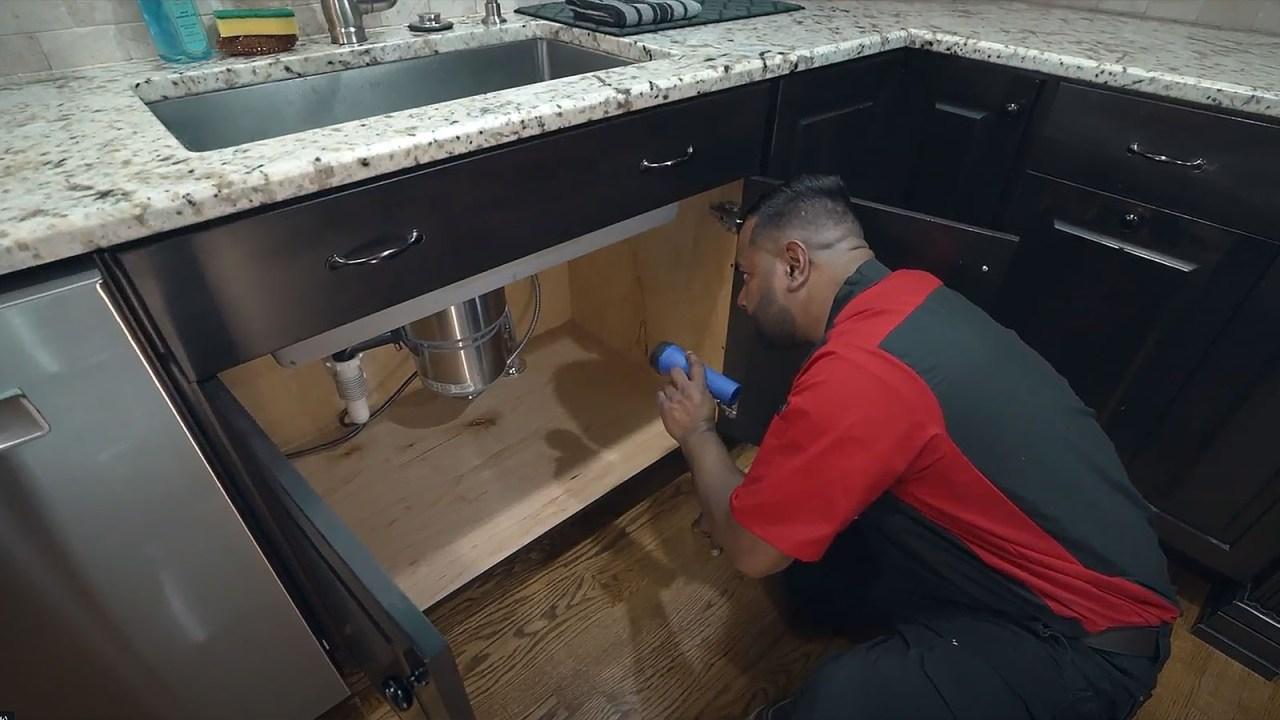
Kitchens are not just for cooking. The behind-the-scenes plumbing ensures your kitchen operates efficiently. Let’s dive into the heart of your kitchen’s plumbing!
A dishwasher requires 3-4 gallons of water per cycle. Its water supply lines, usually 3/4 inch in diameter, are often made from copper, PEX, or CPVC materials.
Your dishwasher’s drain hose, typically 1-2 inches in diameter, connects to either the garbage disposal or drain pipe under your sink.
Modern fridges often have ice-makers and water dispensers needing a water supply line. This line is commonly 1/4 inch in diameter with copper, PEX, or CPVC materials.
The water supply line connects your fridge to the water shut-off valve typically located under your sink or near your home’s water supply lines.
Garbage disposals connect to the drain pipe under the sink. A trap is often installed with a disposal to catch any debris trying to make its way back up into the sink.
A water purifier, usually under the sink, hooks up to your cold water supply line. It filters out impurities giving you clean drinking water on tap.
Instant hot water dispensers under your sink heat up water in a jiffy. They’re hooked into the cold-water supply line and electrical system.
Your freezer’s ice-maker also relies on a connection to a water supply line enabling it to produce and store ice cubes.
A water softener, typically by your water heater, connects to your main supply line. It removes minerals making the water more appliance-friendly.
Leaks and clogs can wreak havoc on kitchen plumbing, so regular maintenance and inspections are critical.
Shut-off valves play a crucial role. They permit individual appliances or areas of the kitchen to have their water supply interrupted, facilitating appliance repairs.
Keeping water pressure within a safe range is imperative for appliance functionality. Too high can cause pipe bursts; too low can lead to appliance malfunction.
The materials used in kitchen plumbing include copper, PEX, CPVC, and galvanized steel. Each has its own pros and cons, depending on your kitchen needs.
Drainage systems remove waste from your kitchen. Regular check-ups can ensure they’re working as they should.
Venting systems remove gases and unpleasant odours from your kitchen. Like drainage systems, they need regular maintenance to keep them functioning optimally.
Common Kitchen Plumbing Problems Faced
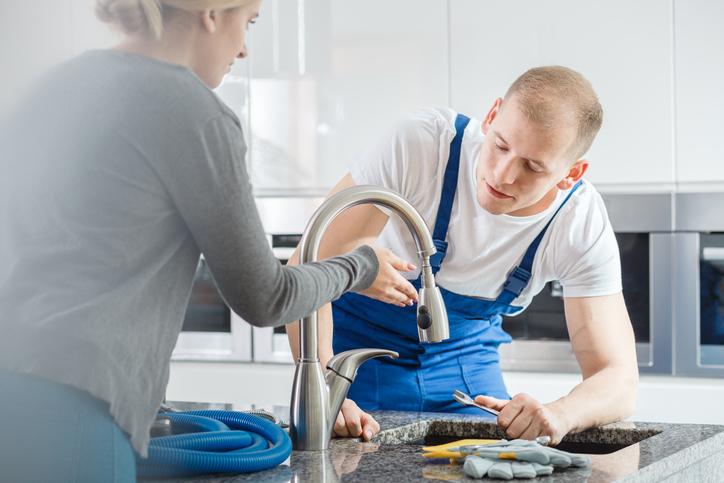
Facing a leaky tap? Often the culprit is a worn-out O-ring. Removing the coupling nut from the base and replacing the O-ring should typically fix the issue.
Sometimes different taps demand unique solutions. Compression taps might need a new stem washer, while cartridge taps could require a new valve cartridge to stop dripping.
- Stubborn spout leaks: If replacing degraded hardware doesn’t solve your leak, you may need to consider replacing the entire unit with professional help.
- Garbage disposal clogs: Sharp bones, fibrous fruits, and vegetable scraps can stop up your disposal motor. Using long-handled pliers or tongs can safely remove visible obstructions.
- Lingering leftovers: Leftover food that hasn’t washed down properly can cause blockages. Avoid corrosive drain cleaners as they can damage your disposal’s components.
- Natural unclogging: Instead, try plunging the drain or use a baking soda-vinegar mixture. This chemical reaction can clear clogs without causing damage to your plumbing system.
Sputtering water issues usually stem from a clogged aerator, faulty valve cartridge or air in the water lines. To resolve this, try cleaning the aerator or replacing the valve cartridge.
If these methods fail to improve water flow, air might be trapped in your lines due to temperature fluctuations or breaches in main water supply lines. Running cold water for five minutes should clear these lines.
Should these DIY fixes fail to solve your kitchen plumbing problems, it’s advisable to seek consultation from a professional plumber to accurately find and address hidden issues in your pipe system.
DIY Fixes for Minor Kitchen Plumbing Issues
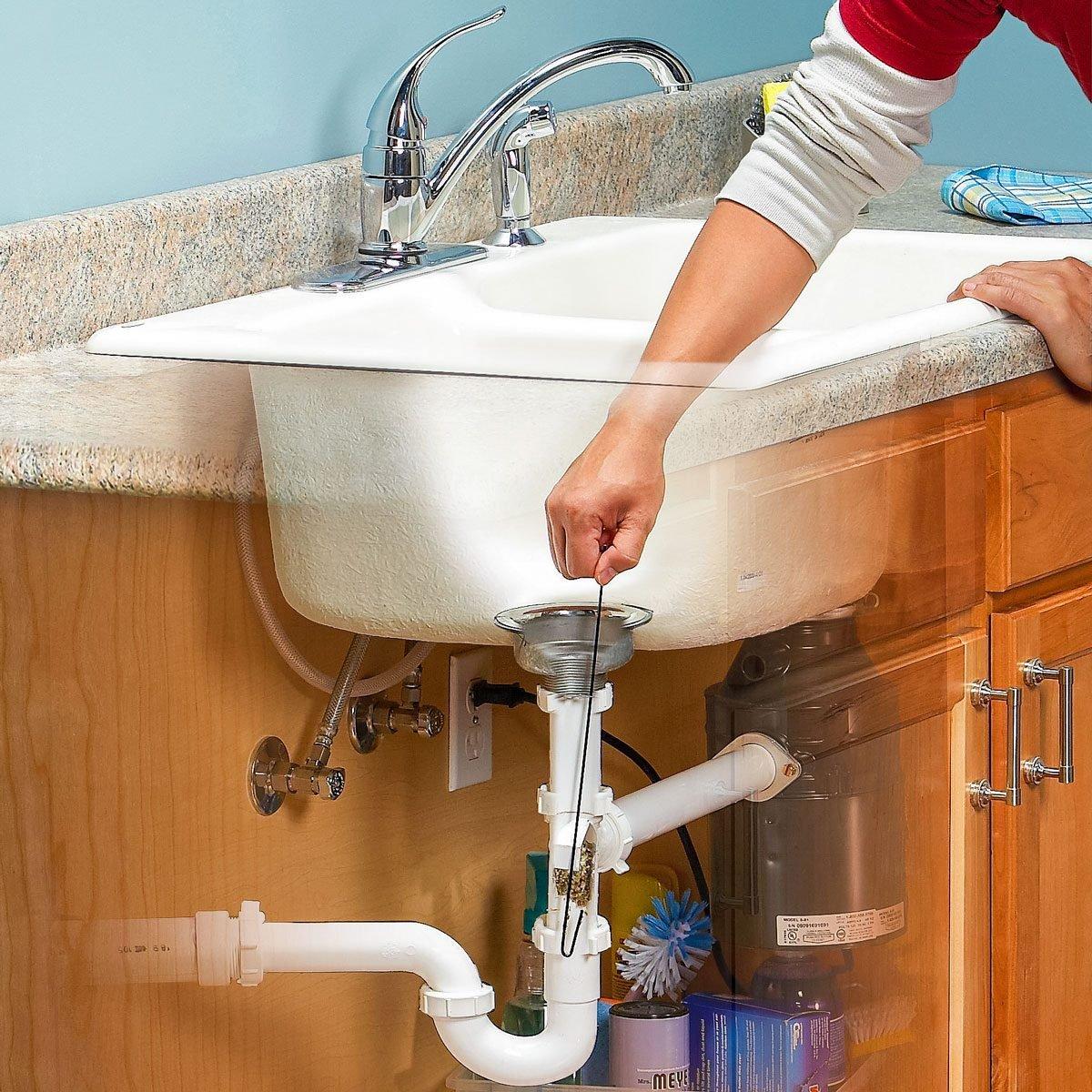
What to do with a loose spanner nut?
A loose spanner nut can be easily sorted. Just grab your wrench and give it a tighten. Remember, it’s usually the grey one on top.
How to handle damaged caulk?
If your caulk seems to be done for, don’t fret. All you need is to scrape out the old one and replace it with new caulk.
Which type of caulk should I buy?
In terms of caulk, tubes are the best bet. They’re easier to manage compared to the ones dispensed using a gun.
Should I replace or repair my basket strainer?
Although possible to repair, a new basket strainer can save you stress. They’re not that costly and easy enough to install yourself.
What’s the solution for a leaking sink?
New putty and a rubber & cardboard gasket are often all you need. Tighten everything down, give it a clean, and you’re set.
How to ensure a tight seal around the sink hole?
Clean all surfaces really good first. Then create a log shape from plumbers putty, place it around the sink hole, and lower.
What if I need a new drain kit for my sink?
If your sink drain is giving you grief, buying a new drain kit might be the quickest fix. Alternatively, try replacing just the gasket first.
What steps should I take if my seals leak?
If your seals are causing leaks, take them off and clean them well. Silicone seal them back together, re-tighten, and leave to dry for a few hours.
Indications That You Need a Professional Plumber
There’s nothing that ruins your day faster than discovering you have no water at all. If it’s just your home experiencing this, it could be a warning sign that something has gone terribly wrong with your plumbing system.
Major leaks, frozen pipes, or issues with the water main are possible culprits. These complications can lead to significant structural damage to your house and its foundation. Not to mention, the potential for an exorbitant water bill.
Unexpected Loss of Hot Water
Having no hot water is another reason you might need to ring up a plumber. Sure, it’s normal for hot water to run out after extensive use, but if your water doesn’t warm up within a reasonable time regardless of usage, there might be a deeper problem with your heater.
A reliable plumber can help troubleshoot persistent issues with your hot water system. It could be as simple as reigniting the pilot light or identifying a continuous flaw causing it to extinguish frequently.
Sweating Water Heater
An often overlooked sign of plumbing trouble is a ‘sweating’ or ‘weeping’ water heater. This phenomenon usually indicates a slow leak in your system, often first noticed when detecting dampness near the heater.
Small leaks can gradually lead to bigger problems. Early detection is paramount to save on repair costs. If you spot rusty spots on your heater or unusual pooling of water nearby, it’s time to call in a professional.
Reduced Water Pressure
If your tap trickles rather than gushes, it’s time to call in the pros. Low pressure could hint at something simple like a clogged aerator needing cleaning, or more complex issues like cracked or broken pipes behind your walls or under the foundation of your home.
Multiple fixtures experiencing low pressure is a definite sign to enlist the help of a plumber. Remember, an ounce of prevention is worth a pound of cure, and tackling smaller issues early can save you from dealing with more severe problems down the line.
Proactive Measures and Regular Maintenance Tips
Being proactive is key in maintaining your kitchen’s plumbing system. Regular checks can prevent minor issues from becoming major problems.
Avoid putting coffee grounds or grease down the sink, as they can cause blockages. Regularly running hot water can help clear buildup.
“Remember: Prevention is better than cure when dealing with plumbing issues.”
It’s also wise to install strainers in sinks to catch any food debris. They’re easily cleaned and will help prevent clogs.
Caring for your disposal system is another vital step. Be mindful of what you’re disposing of – certain foods can damage the blades or cause jams.
If you’re leaving your home for an extended period, switch off the water supply to avoid potential leaks causing damage while you’re away.
Lastly, seek professional help if you’re unsure about anything. There’s no harm in getting expert advice to help maintain your kitchen plumbing system.
How Kitchen Sink Plumbing Operates
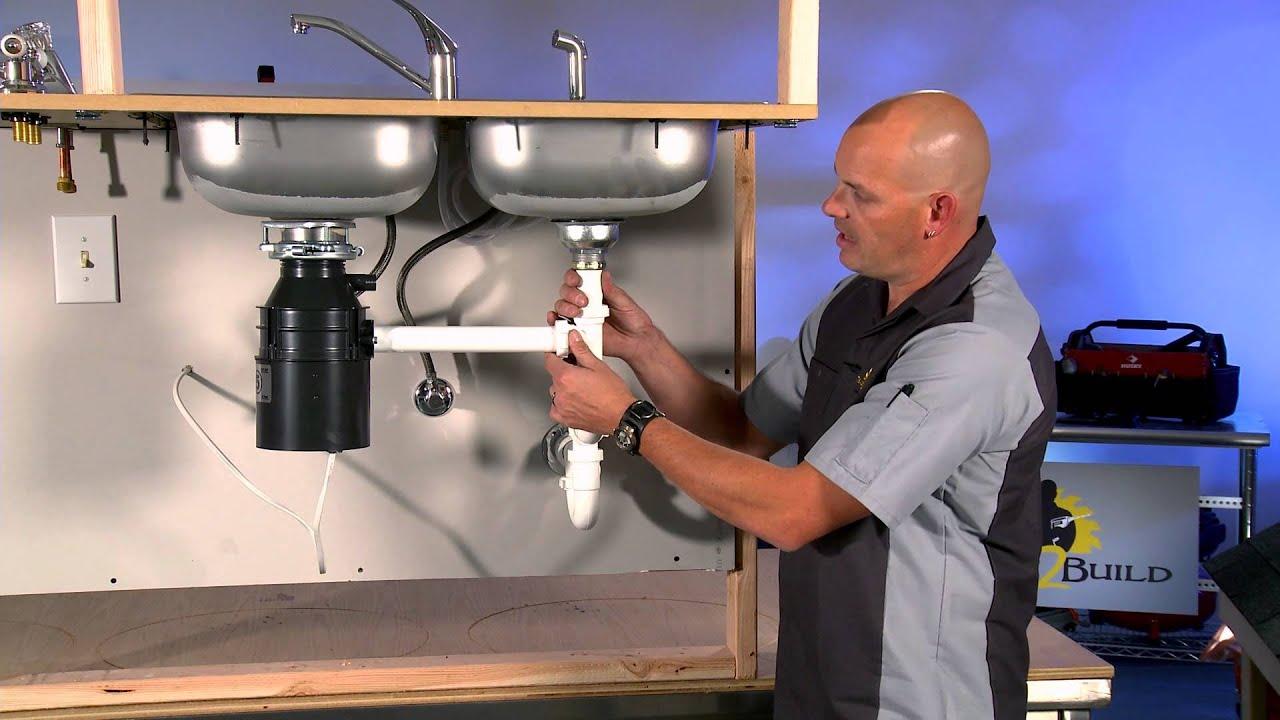
The heart of your kitchen’s plumbing system is the sink. In this operation, several key components play a vital role.
Your kitchen sink thrives on a U-shaped pipe known as a Trap. This pipe holds water, creating a seal against sewer gases while trapping small objects that tumble into the sink.
The Sink Drain includes the drain pipe and discharge lines. Water and waste flow through this into the trap.
- Drain Pipe: This vertical pipe connects the sink drain and extends downwards to the sewer line or your home’s main plumbing system.
- Sewer Line/Septic Tank: This larger waste plumbing system channels all your home’s wastewater to the municipal sewer system or your private septic tank.
- Waste Disposal Unit: An optional, but useful component, it breaks down food waste into flushable particles.
A well-functioning kitchen sink requires a strainer, trap, drainpipe, sewer line, or septic tank. The sturdy strainer blocks large objects from entering the plumbing system.
Pivotal to maintaining a smell-free house is the U-shaped trap under the sink. It provides a water seal that prevents harmful sewer gases from entering your home whilst catching any smaller items that might accidentally fall into the sink.
Proper installation and regular maintenance ensure a functional kitchen sink drainage system. Placement of components such as the strainer and waste disposal unit helps clog prevention and maintains smooth flow in your plumbing system.
For understanding and troubleshooting kitchen sink issues, you’ll find resources like DIY forums or expert-tips-based guides invaluable. They offer detailed guidance on unclogging sinks and maintaining a trouble-free kitchen sink.
Detailed Study of a Kitchen Sink Drain
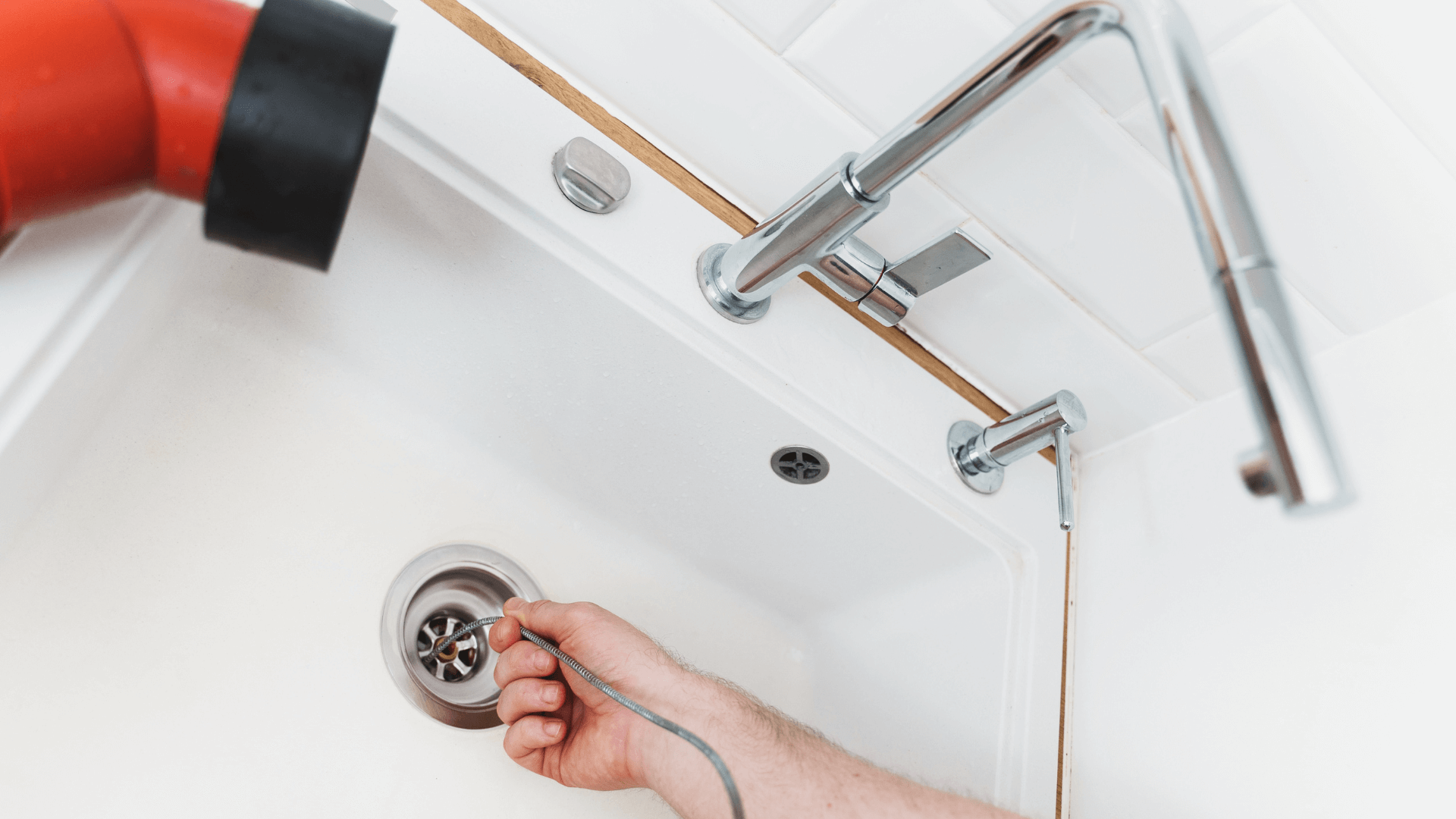
Understanding your kitchen’s plumbing system can be a game-changer. One crucial part is the kitchen sink drain, offering different products and features.
Product Availability varies significantly. The universal 1-1/2-in pipe and fittings kit for kitchen sinks is popular. This white polypropylene kit can fit into 3 configurations.
- Double sink: Ideal for larger kitchens, the kit helps manage waste efficiently.
- Single sink: Perfect for smaller spaces, ensures efficient drainage.
- Dual sink with dishwasher drain setup: A handy solution for multitasking without hassles.
The Key Features are worth noting. The strainer basket catches debris avoiding clogs, useful in kitchen sinks. There’s also a universal sink drain kit with a chrome-plated finish.
Shopping at Lowe’s also introduces you to Specific Products, including the SnappyTrap Drain Kit for double bowl sinks and Road & Home Chrome Universal Sink Drain Kit.
Repair and replacement are equally important priorities for homeowners. Lowe’s offers parts for both Sink Drains and Sink Parts Repair. Providing you the tools necessary to maintain your plumbing system at home.
A wide Product Variety is available, including sink drain kits, strainer baskets, and other necessary fixtures. This variety caters to different sink configurations and needs.
Understanding Garbage Disposal and Care
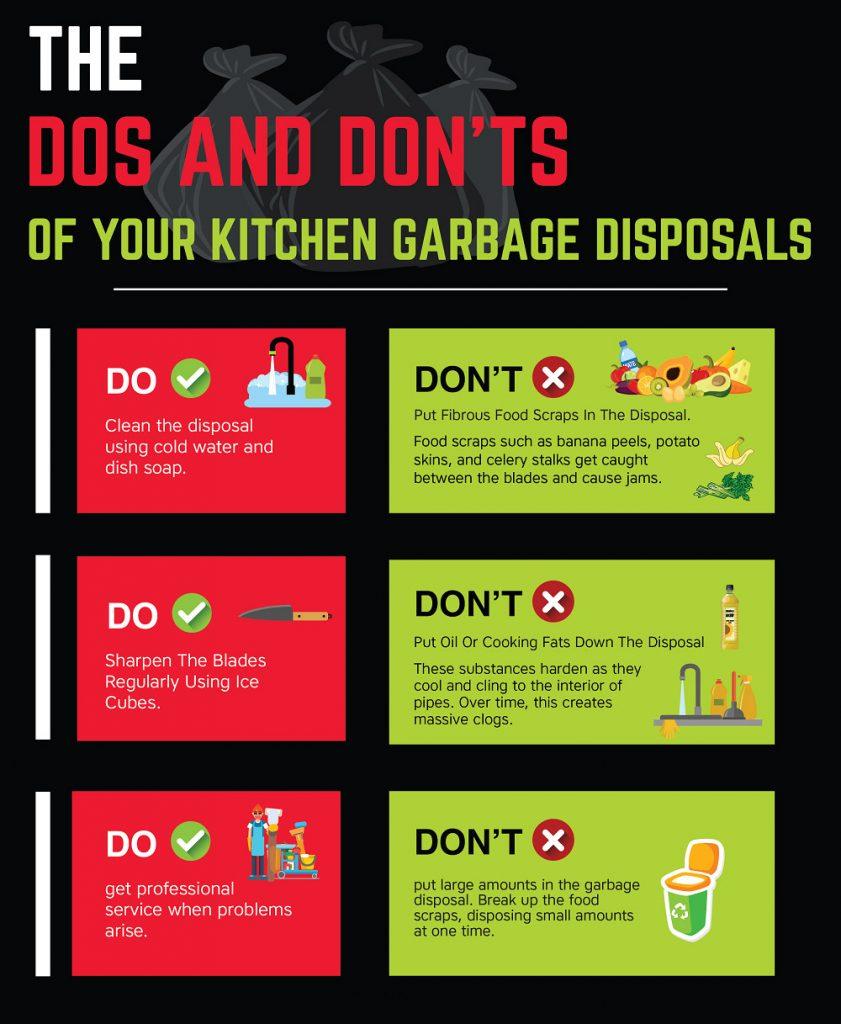
Garbage disposals are nifty devices, designed to chop up food waste for easy passage through plumbing.
Most of these handy appliances run on electricity, while some rare versions use water pressure.
You’ll typically find them tucked away under your sink, ready to crunch up any leftovers you feed it.
The Strain on Septic Systems
Despite their convenience, garbage disposals can strain your septic system.
It’s crucial to consider the stress they impose versus any potential benefits they provide.
Mindful Usage and Maintenance
To ensure longevity, careful usage and regular maintenance of your garbage disposal is essential.
Avoid letting hard substances like bones enter the system as it could damage it.
Remember, a properly cared-for garbage disposal is an asset to any kitchen plumbing system.
Addressing Dishwasher and Fridge Leakages
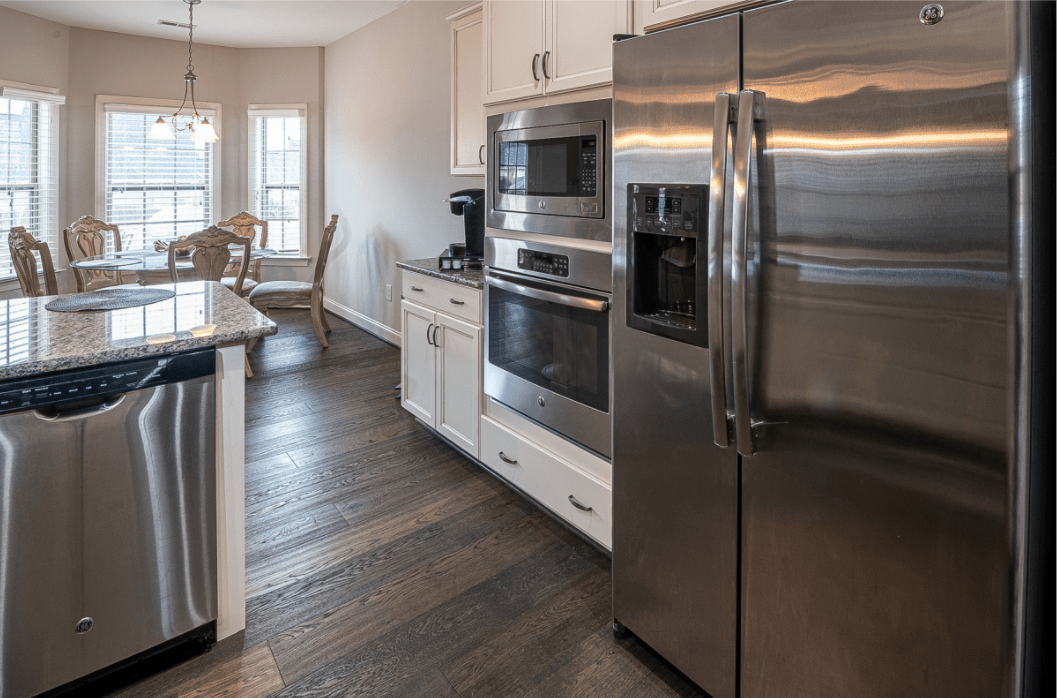
Leaky dishwashers and fridges can be a hassle, but often the fix is simple. A common cause for leaks is a faulty or worn-out door gasket.
Cleaning the gasket with a damp cloth or detoxing with warm soapy water using a toothbrush could solve the issue. Examine it carefully for cracks or damage.
If parts of the gasket appear damaged, they should ideally be replaced. If you’re not comfortable doing it yourself, consider hiring a professional plumber.
You might end up with leaks if you use regular dish soap in your dishwasher instead of actual dishwasher detergent. This can generate an excess of suds.
It’s also important to inspect your appliance’s drain line. Loose clamps or worn-out tape could lead to leaks. Tighten clamps and replace tape where necessary.
| Problem | Solution | Professional Help Needed? |
|---|---|---|
| Damaged door gasket | Clean and replace if needed | Potential |
| Improper detergent use | Switch to dishwasher detergent | No |
| Faulty drain line | Tighten clamps, replace tape | Potential |
| Clogged drain line | Hire professional to remove blockages | Yes |
| Leaky water hose | Tighten the hose clamps | No |
| Consider professional help if unsure | ||
Addressing these issues should prevent leaks and keep your appliances working efficiently.
Coping with Insufficient or No Hot Water
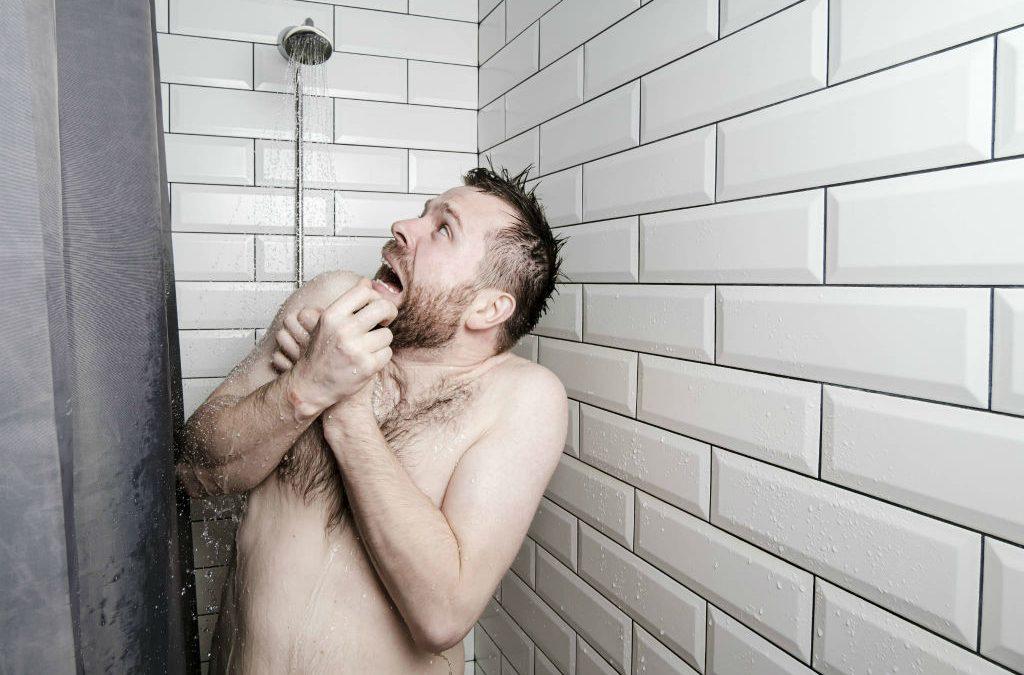
Unpredictable hot water supply can test your patience. Instead of offering excuses, consider proactive measures to ensure your family and guests don’t endure cold showers.
Hot Water Usage Schedule
Coordinating hot water usage can alleviate the pressure on your system. Establish shower schedules to prevent simultaneous demand for hot water.
Check Efficiency Gaps
Hidden efficiency issues could affect your hot water supply. Regular checks on your plumbing system can mitigate these inconveniences.
Laundry and Hot Water
Most washing machines heat their own water, reducing the burden on your hot water system. Setting your machine to use cold water further alleviates strain.
Limiting Shower Duration
Encourage household members to limit their showers to 10-15 minutes. This simple measure can significantly extend your hot water supply.
The goal isn’t to mimic a hotel, but rather to create a comfortable living environment in your home. So, when glitches occur, tackle them head-on to remedy the situation promptly.
Mastering Kitchen Plumbing
With a solid grasp on your kitchen’s plumbing system, you’ll be empowered to tackle minor issues and prevent major ones. This insider’s guide demystifies the complex network of pipes, taps and drains, helping you understand the intricacies of water supply, waste disposal and appliance connections. Keep it handy – it’s your secret weapon for a smooth-running kitchen.
- Kitchen Oasis. Fusion of Relaxation and Functionality (AU) - November 2, 2024
- Pure Water Pleasure. Why You Should Consider Installing a Kitchen Water Filter - October 22, 2024
- Green Plumbing Practices. Eco-Friendly Ideas for Your Melbourne Kitchen - October 2, 2024
Related posts:
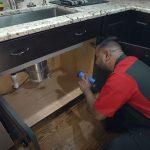 Simple Plumbing Tips for Trouble-Free Kitchen Operations
Simple Plumbing Tips for Trouble-Free Kitchen Operations
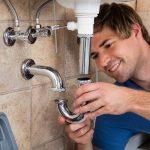 8 Tips to Minimise Kitchen Plumbing Leaks
8 Tips to Minimise Kitchen Plumbing Leaks
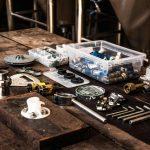 Plumbing Perfection: Tips to Maintain Your Aussie Kitchen’s Lifelines
Plumbing Perfection: Tips to Maintain Your Aussie Kitchen’s Lifelines
 Easy Kitchen Plumbing Upgrades to Save on Your Water Bills
Easy Kitchen Plumbing Upgrades to Save on Your Water Bills
 Innovative Kitchen Plumbing Products You Need to Know About
Innovative Kitchen Plumbing Products You Need to Know About
 Common Kitchen Design Mistakes to Avoid: Expert Tips from Fergusons Plumbing Australia
Common Kitchen Design Mistakes to Avoid: Expert Tips from Fergusons Plumbing Australia

